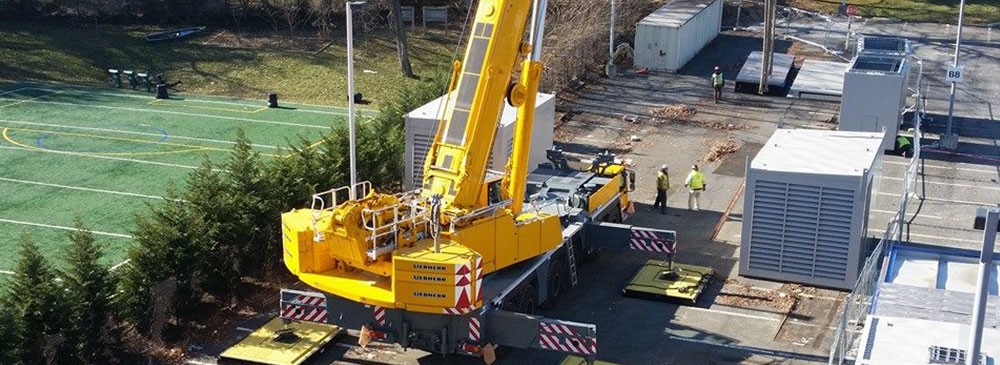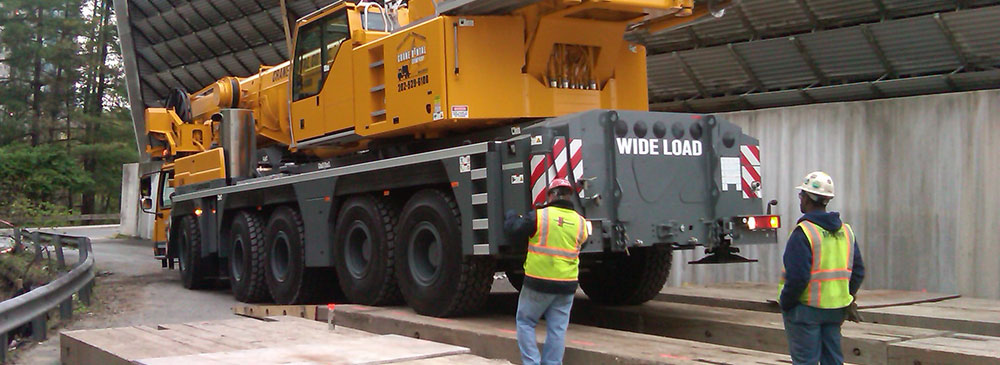
When you are working with a crane, there are plenty of hazards that come with it. The most common ones are:
Overloading
This happens when the load exceeds the crane’s capacity, but it can also happen when the cargo is swinging, dragging, suddenly dropping, or it’s centre of gravity is not immediately under the crane.
Overloading can decrease the structural integrity of the crane and increase the chance of the crane malfunctioning.
There is also the risk of the load falling and hurting the people working on the site. To avoid this, you should be ultra-cautious of the weight that you lift with the crane. As a rule of thumb, don’t lift more than the crane is designed to do.
Before you pick the crane from the crane rentals, confirm with them about the maximum weight that you can carry with the crane. Of course, you should never exceed it.
Falling/dropping load
Falling materials are another potential hazard when operating a crane, and they can cause significant injuries if someone is struck by or caught between them.
Objects may fall as a result of poor or inadequate rigging or material tying down. It could also be due to a mechanical failure of the lifting setup or even because of the movement of the materials being lifted.
To ensure this doesn’t happen, always do a double check of the load before you lift and ensure that it’s securely in place. It’s even wise for the crane operator to slightly lift the load to confirm that it’s securely in place. They should only continue with the lift after they have ascertained that it’s in place.
Sling angle
This is a critical issue that many people with limited crane experience do not completely get.
A resultant sling angle is created when you start the sling at the crane hook, go to the load at an angle, via I-bolt on top of the load, go to the opposite side through an i-bolt, and then back to the crane hook.
With this design, what appears to be a 45-degree angle due to the forces being applied to the sling is actually cut in half, well below what safety standards permit. People need to be aware of this circumstance so that they don’t overwhelm the sling.
Swing
Operators will undoubtedly encounter swing in the crane at some point, and it is critical that they understand how to remove swing from a lift properly.
The objective is, first and foremost, to not have a swing at all. However, due to the variety of conditions that may arise, a crane operator will occasionally encounter a swing and must know how to deal with it.
To reduce the risk of the swing, you should work with an experienced crane operator who can easily counter the swing.
Guide rope availability
When approaching a load, be careful not to touch it or the rigging. You need a guiding rope to help you out.
However, the challenge comes when there may not be a guide rope available. Someone may have stolen the guide rope, used it, and left it somewhere, but no one knows where it is.
Without the guide rope, operators may be enticed to briefly touch the cargo, which considerably increases risk.
Guide ropes aren’t always highly efficient, especially when it comes to regulating loads. The guide rope can assist with load rotation, however, it can only be pulled and not pushed, for obvious reasons.
To be on the safe side, work with rigging professionals who know how to handle the guide rope.
You might need two or more operators, each with their own guide rope, to control the load. Or, the alternative is to use a pole, which allows the operator to grab the load and push as well as pull it.
Wear/damage
It is usual for equipment to wear and tear with regular use. However, frequent inspections of the crane are required to guarantee that there is no serious damage to the hoist or rigging equipment.
Any sort of damage to the equipment should be categorized as either fixable—and fixed before the operator uses it—or damaged beyond repair and scrapped.
Working with damaged load-bearing equipment can affect their performance and potentially create safety hazards.
Crane training—the key to reducing the hazard effects
Training is essential for safe crane operations. Specific training needs can differ per jurisdiction so you should find the type of training that is ideal for your location.
Regardless of where you are located, training for personnel involved in crane operation aims to provide the necessary knowledge and skills for them to perform the task safely and effectively and to operate the equipment according to the manufacturer’s instructions as well as comply with applicable requirements and standards.
A comprehensive and up-to-date training program for crane operators and other workers involved in hoisting and rigging is a solid start.
Crane operator training includes both theoretical and practical hands-on components. It may include sections on crane components and safety equipment, as well as load handling concepts and how to calculate lifting capacity.
It could also comprise safe labor practices, such as agreed-upon communication methods and pre-operation inspections, as well as operating procedures and techniques, such as identifying factors that can affect hoist capacity.
Crane operation involves so many possible hazards that frequent refresher training may be required to review important knowledge and skills.
Parting shot
There are plenty of hazards that come with working with cranes. To be on the safe side, be on the lookout for these hazards and work on preventing them.
To reduce the chances of accidents happening, ensure that everyone handling the crane is fully and properly trained.
On-site training is also necessary for situations and applications that necessitate specialized skills or pose unique risks.
If an operator is expected to execute a task that is not covered in basic training, you can collaborate with the foreperson or supervisor to ensure the operator has the necessary knowledge of the scenario.
The people working with the cranes might be highly trained and experienced but if the crane is in horrible shape, they will have the worst experience. To ensure this isn’t the case, get well-maintained cranes from the crane rental services VA.



